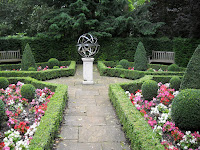If Winter comes, can
Spring be far behind?
Percy Bysshe Shelley
Once again I find myself visiting a familiar name from blogs
of the past. I guess that if you choose
a certain career path then you are bound to meet people with a vision similar
to your own.
Although I’m not a big poetry fan, a line from a Shelley
poem came to mind with the recent cold snap and snow fall that we experienced
in London. The actual poem is Ode to the West Wind and there is a mural in Soho
which is kind of like a dedication to the poem. Of course, the writer of the
poem needs no introduction.
Percy Bysshe Shelley who is credited as being one of the
major romantic poets was born on the 4th of August in 1792 near
Horsham in West Sussex. Having grown up with sisters, when Shelley entered Eton
he was bullied constantly. He was slight
of build and bookish, not having played sports or just done the types of things
that other boys his age had. Shelley went on to Oxford, but due to his more
progressive view (he was somewhat of a radical), they kicked him out which is
kind of cool because not everybody can say they were expelled from Oxford.
 |
| Mural in Soho - Noel St, London |
Shelley eloped with his first wife Harriet Westbrook in
1811. It seems that eloping was the
thing to do back then because when that marriage fizzled he eloped with Mary
Godwin. From what I can gather, they
used to rendezvous in the cemetery where her mother was buried which is kind of
cool too. He actually threatened to commit suicide if she didn’t return his
affections because he was madly in love with Mary. I probably would have just
let him die, but Mary ran off with him and we all know what became of her.
The Shelleys moved around quite a bit travelling through
Europe and all the while he continued to write both romantic and political poetry.
Most of the later travel was throughout Italy and in 1822 when he was sailing
back from Livorno to Lerici, Shelley drowned in a storm. There are all sorts of stories which tell
that his death may not have been accidental, some say he wanted to die, others
say he was murdered. It’s kind of sad to think that he was only 29 though.
 |
| Blue Plague on the house that they live in together in London |
Shelley was cremated on the beach where his body washed
ashore but apparently his heart was snatched from the funeral pyre by his
friend Edward Trelawny and is now buried with Shelley’s son in Bournemouth.
Another account tells us that it is just the ashes of the heart. I kind of like to picture someone reaching
into the fire and pulling out his heart before it burnt so I’m going to ignore
the latter.
When I think about the life of this particular writer, it makes
me wonder what would have happened if he didn’t have the kind of mind that he
had. Would we still have the wonderful
poetry that he has bequeathed to the world, or would he have gone through Oxford
and chosen a more ordinary path? I guess I’ll never know, but what I do know is
that Once upon a time in the 1700’s, a child that grew into a poet was born and
from that day until he died, he remained the free thinker that produced some of
the greatest poetry of his time.








